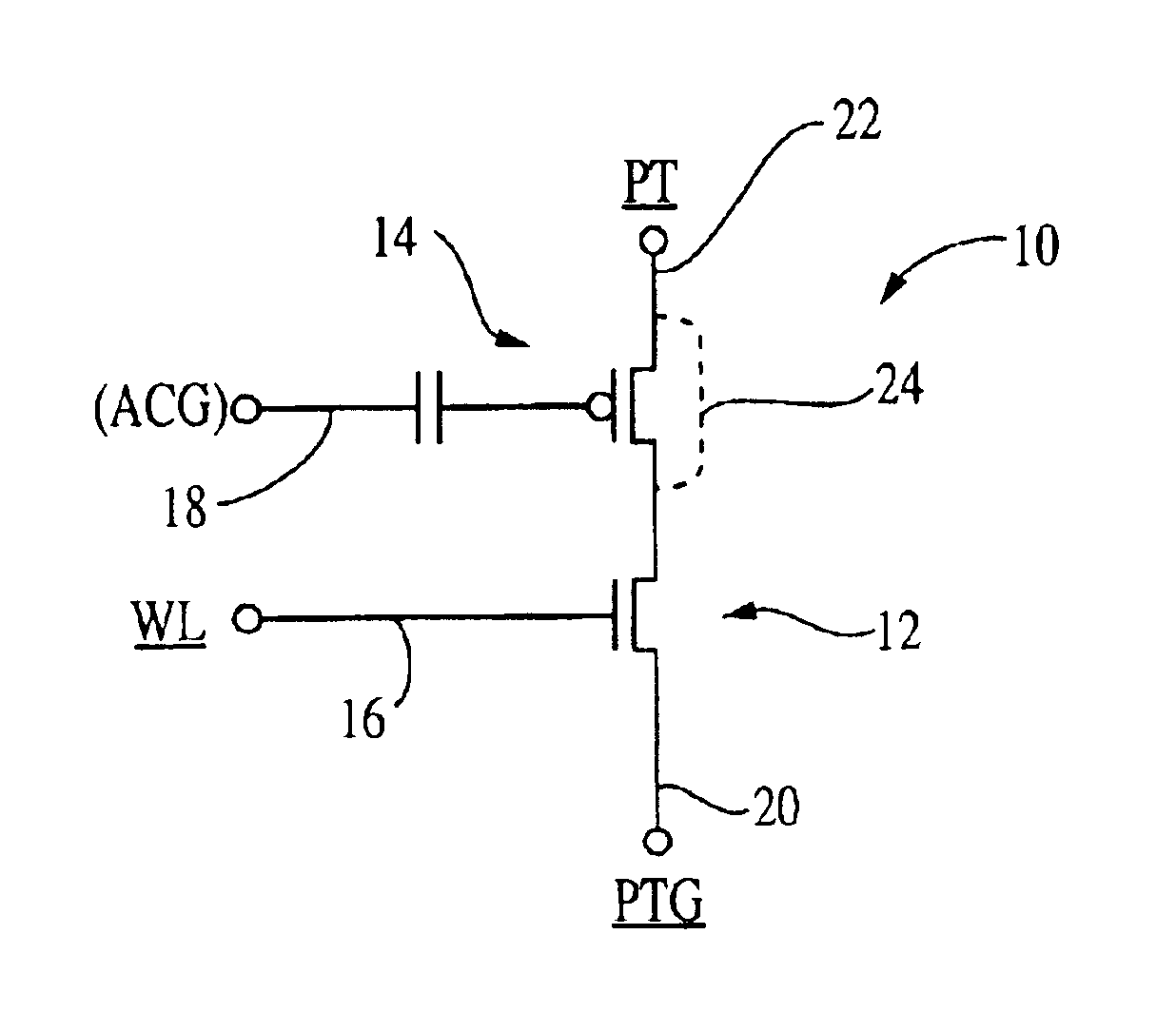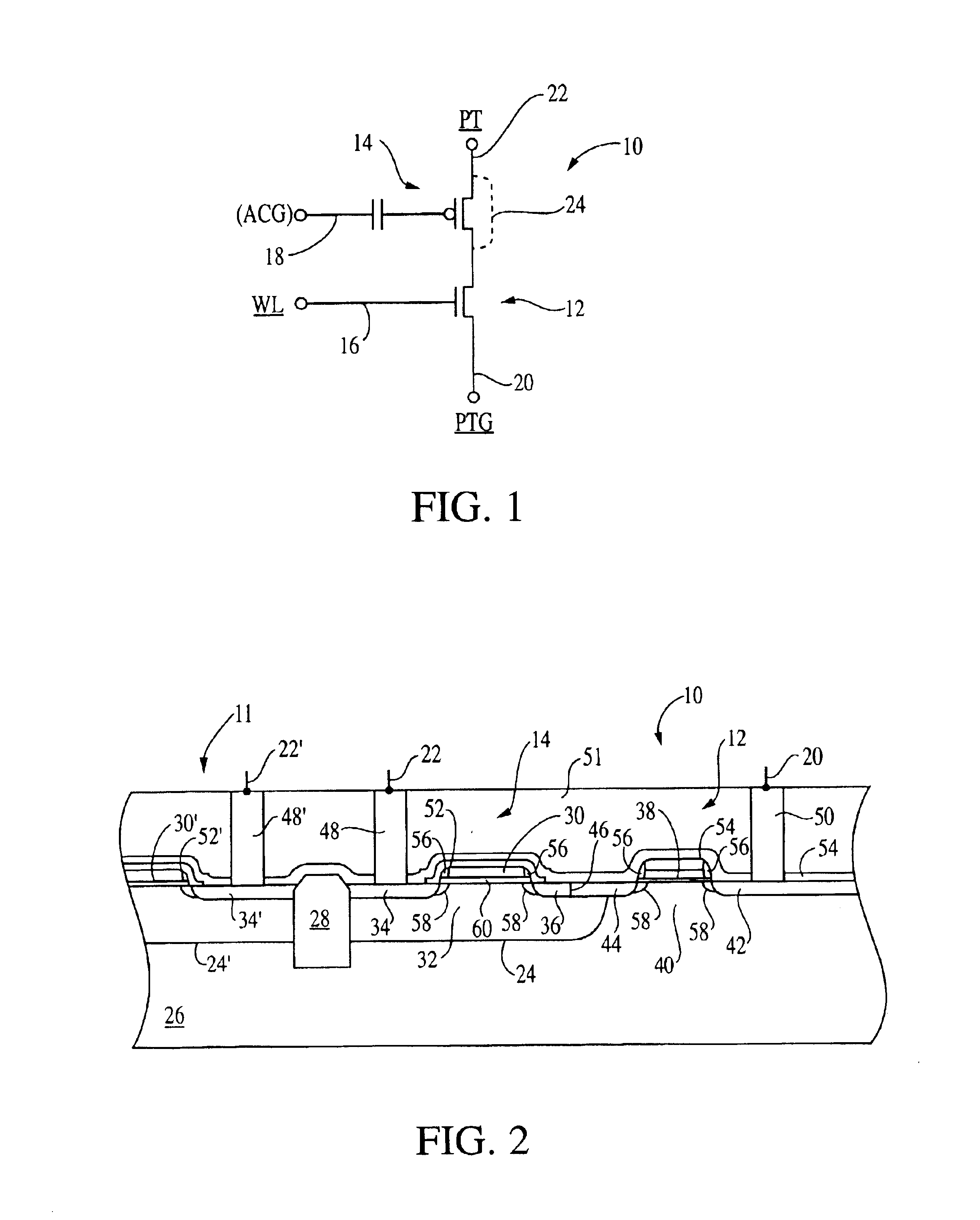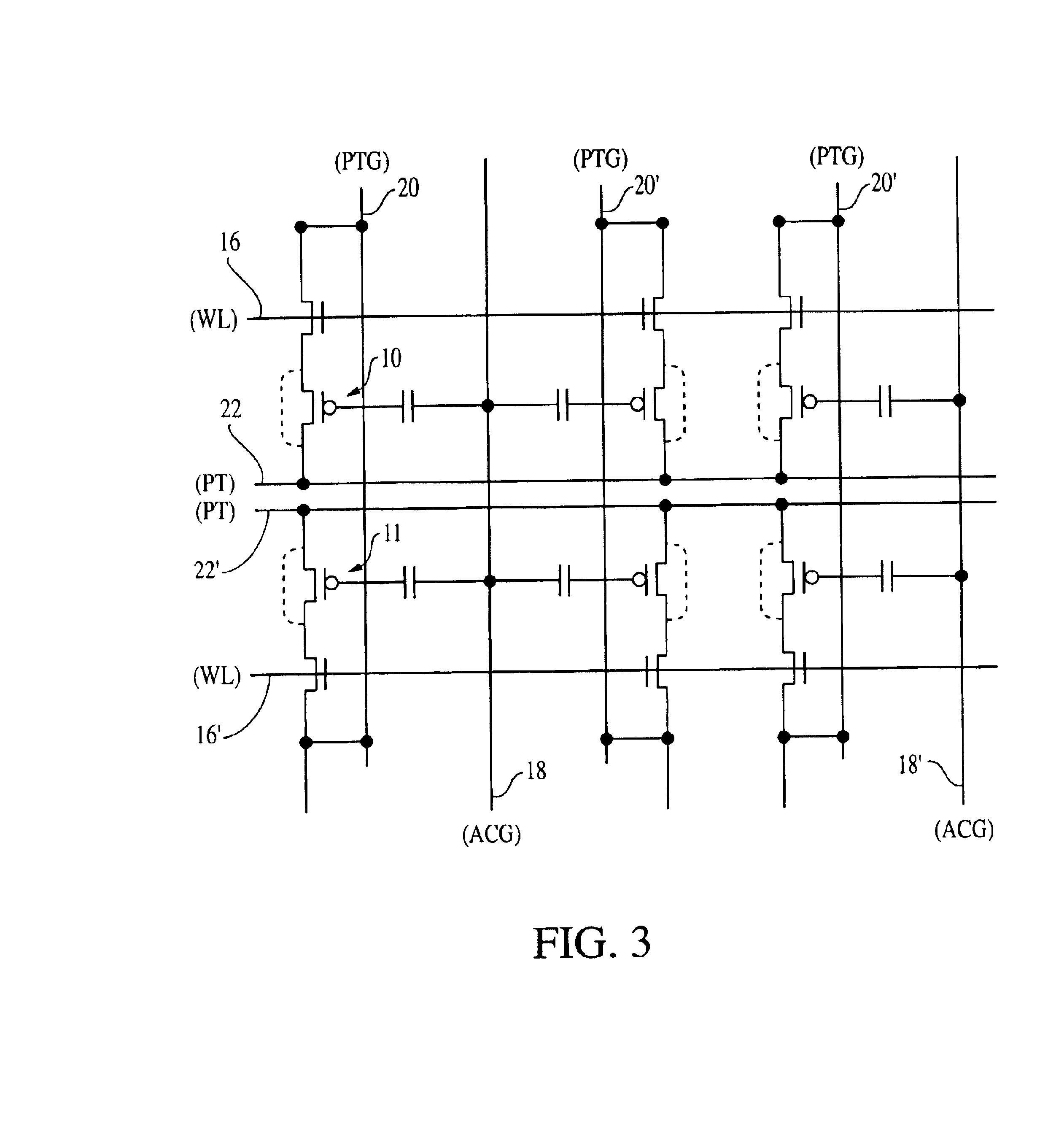EEPROM cell having a floating-gate transistor within a cell well and a process for fabricating the memory cell
a floating-gate transistor and memory cell technology, applied in the field of nonvolatile memory devices, can solve the problems of high voltage and low voltage transistors, particularly difficult to fabricate eeprom devices,
- Summary
- Abstract
- Description
- Claims
- Application Information
AI Technical Summary
Benefits of technology
Problems solved by technology
Method used
Image
Examples
Embodiment Construction
FIG. 1 illustrates a schematic circuit diagram of a two-transistor memory cell 10 arranged in accordance with one embodiment of the invention. The two-transistor memory cell includes a write transistor 12 and floating-gate transistor 14. A word line 16 is electrically coupled to the gate electrode of write transistor 12. A control-gate region 18 is capacitively coupled to the gate electrode of floating-gate transistor 14. A bit line 20 is electrically coupled to an electrode region of write transistor 12 and a sense line 22 is electrically coupled to an electrode region of floating-gate transistor 14. In accordance with the invention, the electrode regions and the channel region of floating-gate electrode 14 are formed in a cell well region 24.
FIG. 2 illustrates, in cross-section, memory cell 10 and a portion of an adjacent memory cell 11. Cell well region 24 resides in a semiconductor substrate 26. The active regions of memory cells 10 and 11 are electrically isolated from each oth...
PUM
 Login to View More
Login to View More Abstract
Description
Claims
Application Information
 Login to View More
Login to View More - R&D
- Intellectual Property
- Life Sciences
- Materials
- Tech Scout
- Unparalleled Data Quality
- Higher Quality Content
- 60% Fewer Hallucinations
Browse by: Latest US Patents, China's latest patents, Technical Efficacy Thesaurus, Application Domain, Technology Topic, Popular Technical Reports.
© 2025 PatSnap. All rights reserved.Legal|Privacy policy|Modern Slavery Act Transparency Statement|Sitemap|About US| Contact US: help@patsnap.com



